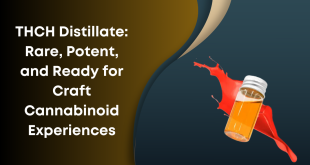The health of your bones can suffer from a vitamin A deficit. Research has demonstrated that low vitamin A levels, particularly in older persons, can result in decreased bone density and an elevated risk of osteoporosis. Deficiency symptoms can include weakening immunity, blurred eyesight, and most notably, brittle bones that are more prone to breaking.
Recognizing the Forms and Functions of Vitamin A
Provitamin A (carotenoids like beta-carotene) and preformed vitamin A (retinol and retinyl esters) are the two main forms of vitamin A. Both types are derived from a variety of food sources and have distinct functions in the body.
Formalized Vitamin A:
found in fish, dairy products, animal products like liver, and foods that have been fortified.
easily taken up by and used by the body.
promotes cell development, immunological response, and eyesight.
Carotenoids (provitamin A):
found in plant-based meals such as leafy greens, sweet potatoes, carrots, and spinach.
To be used properly, vitamin A must be transformed by the body into retinol, which is its active form.
offers the benefits of antioxidants and is generally regarded as safe because the body regulates the conversion process, even at larger intakes.
While vitamin A is essential for healthy bone growth and development in childhood, studies have indicated that an excess of preformed vitamin A or an imbalance in vitamin A levels may have detrimental effects on bone health in adulthood.
Bone Health and Osteoporosis: An Increasing Concern
The disorder known as osteoporosis causes the bones to deteriorate and become brittle, increasing the risk of fractures. It appears when the body either generates too little bone, loses too much bone mass, or does both. Osteoporosis is caused by a number of factors, including genetics, aging, hormonal changes (particularly in postmenopausal women), and lifestyle choices like smoking, food, and physical exercise.
One important determinant of bone strength is bone density, which is a measurement of the amount of minerals in your bones. It’s imperative to maintain ideal bone density throughout life to lower the risk of fractures and osteoporosis.
The Connection Between Osteoporosis and Vitamin A
Bone health and vitamin A have a complicated relationship. Although adequate vitamin A is necessary for healthy bone formation and remodeling, an excess of it can weaken bones and raise the risk of fractures. Here’s how consuming too much vitamin A may aggravate osteoporosis:
1. Low bone density and elevated vitamin A levels
Excessive consumption of preformed vitamin A (retinol) from supplements or high-fat diets has been linked to reduced bone density and an increased risk of fractures, according to studies. The process underlying this is related to how retinol affects osteoclasts and osteoblasts, the cells in charge of remodeling bone.
Bone resorption is the process by which old or diseased bone tissue is broken down by osteoclasts.
The cells that create new bone tissue are called osteoblasts.
Bone formation and resorption are in balance under normal circumstances. On the other hand, too much vitamin A may overstimulate osteoclasts, which would accelerate bone loss and decrease bone growth. Osteoporosis risk rises as a result of this imbalance’s gradual loss of bone density.
2. Effect on Vitamin D and Calcium Absorption
Overconsumption of vitamin A may also affect the absorption of calcium, which is another important component of healthy bones. Maintaining strong bones requires appropriate absorption of calcium, which is a fundamental component of bone tissue. Vitamin D, an essential mineral that aids in controlling the body’s calcium levels, may be less efficient when combined with vitamin A. Inadequate vitamin D levels lead to a reduction in calcium absorption, which exacerbates bone loss and heightens the likelihood of osteoporosis.
3. Preformed vs Provitamin A: An Important Differenc
It’s critical to distinguish between provitamin A (carotenoids) and preformed vitamin A (retinol) in terms of their effects on bone health. The main cause of the detrimental effects on bone density is too much preformed vitamin A, which can be found in meals and supplements derived from animals. Since the body controls provitamin A’s conversion to retinol and prevents excess buildup, it does not seem to have the same detrimental effects on bone density as vitamin A derived from plants.
Appropriate Vitamin A Consumption and Steer Clear of Excess
A balanced diet high in vitamin A is necessary to prevent osteoporosis and preserve strong bones. Age, sex, and life stage all affect the recommended dietary allowance (RDA) for vitamin A. The RDA for vitamin A for the majority of individuals is:
Men:
RAE (retinol activity equivalents) at 900 micrograms (mcg) daily.
700 mcg RAE daily for women.
It’s important for those over 70—especially women—to limit their consumption because bone density normally declines with age. It is advised to consume no more than 3,000 mcg of RAE per day in order to avoid toxicity and negative effects on bone health. Many experts, however, contend that in populations at risk for osteoporosis, even lower amounts may be safer.
Vitamin A Sources
Animal-Based Sources:
High concentrations of preformed vitamin A can be found in liver, fish oils, eggs, dairy products, and fortified meals. To prevent overindulgence, it is advised to consume these in moderation.
Plant-Based Sources:
Carotenoids-rich fruits and vegetables, like kale, sweet potatoes, carrots, and spinach, are great providers of provitamin A. Since the body regulates the process of converting them to retinol, there is no risk of toxicity while consuming them.
Vitamin A for the Prevention of Osteoporosis: Advice for Bone Health
In light of the possible hazards linked to elevated vitamin A consumption, specifically concerning bone health, the following tactics aim to preserve robust bones and mitigate the likelihood of osteoporosis:
1. Consume a diet rich in nutrients but balanced
Make a point of eating a balanced diet that provides enough calcium and vitamin D. Together, these two nutrients promote strong, dense bones and are critical for bone health. Dairy products, leafy greens, and fortified plant-based substitutes are among the foods high in calcium. Supplements, fortified milk, fatty fish, and sunlight exposure can all help keep vitamin D levels at their ideal levels.
2. Track Your Vitamin A Consumption
Take note of where you get your vitamin A from in your food, particularly if you take supplements. If your diet provides enough vitamin A, don’t use high-dose supplements unless your doctor advises you to. Give provitamin A from plant-based foods a higher priority than preformed vitamin A if you are at risk of osteoporosis.
3. Frequent Workout
Exercises involving weight bearing, such as jogging, walking, or resistance training, support and enhance bone density. Frequent exercise strengthens bones and lowers the chance of fractures and osteoporosis.
4. Examine Doctor Advice Before Taking Supplements
Speak with a healthcare professional if you’re thinking about taking a vitamin A supplement to be sure you’re not taking more than is advised. A healthcare professional may suggest a customized supplement regimen that promotes bone health without sacrificing safety for people who are more susceptible to osteoporosis.
5. Continual Examinations for Bone Health
Frequent bone density testing can help identify early osteoporosis symptoms and enable prompt care, particularly for women over 50. A DEXA scan, or bone density test, can help diagnose and manage bone loss early on and stop it from getting worse.
In summary
Although vitamin A is a necessary supplement, its impact on bone health—especially in connection to osteoporosis—should also not be disregarded. While getting enough preformed vitamin A is essential for good health overall, taking too much of it can lead to bone loss and raise the risk of osteoporosis. You may safeguard your bones and lower your chance of fractures as you age by eating a balanced diet rich in plant-based provitamin A and promoting bone health with enough calcium, vitamin D, and exercise. For individualized guidance on vitamin consumption and bone health, always speak with a healthcare professional.
 Diverse Perspectives: Insights & Stories Exploring Ideas, Sharing Knowledge
Diverse Perspectives: Insights & Stories Exploring Ideas, Sharing Knowledge





